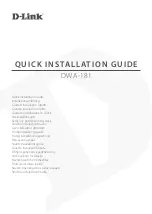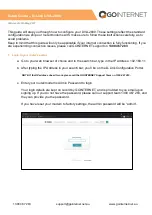
COMSPHERE 3900 Series Modems
12-16
September 1998
3910-A2-GN32-40
Security Password Entry Techniques
The previous sections described how to set up and configure your network for dial access security.
Once configured and enabled, you must now supply a password to originate or answer a call.
The following examples demonstrate how to enter an Answer Access security password string and
an Originate Access password string.
Answer Access Password (VF-Side and DTE-Side Entry Techniques)
Answer Access password security uses two password entry techniques: VF-side password and
DTE-side password entry. A VF-side password consists of DTMF tones and is entered by the
originating caller via the AT command set, the DCP, or manually with an attached telephone.
A VF-side password can be entered with the AT dial command. The following examples illustrate
two ways to enter a VF-side password:
TYPE:
ATDT5551234W12345678#
or
ATDP5551234T@12345678#
Where:
ATD is the AT dial command.
P and T are Pulse dial and Tone (DTMF) dial modifiers.
5551234 is the phone number.
W is the second dial tone dial modifiers.
@ is the wait for quiet answer dial modifiers.
12345678 is the 8-digit password. VF-side passwords can be from 1 to 8 digits
long and are restricted to decimal digits.
# is the password terminator character.
NOTE
While pulse dial can be used to originate the call, DTMF tones must
be used for the password. This can be accomplished by using the P
and T modifiers appropriately. Refer to the Dial command in
Chapter 14, AT Command Set and S-Registers, for more on
modifiers.
A DTE-side password is entered after the modems have trained, but before a normal connection is
established. The following example illustrates how to enter a DTE-side password:
TYPE:
abc123
PRESS:
Enter
Where:
abc123 is a 6-alphanumeric character password. Characters used for DTE-side
passwords are case-insensitive. DTE-side passwords can be from 1 to
6 characters in length.
If a valid password is entered, then the modems connect and data can pass.
















































